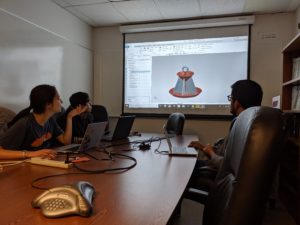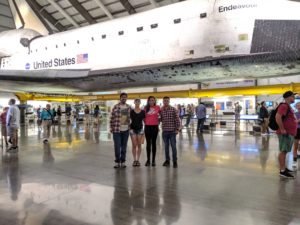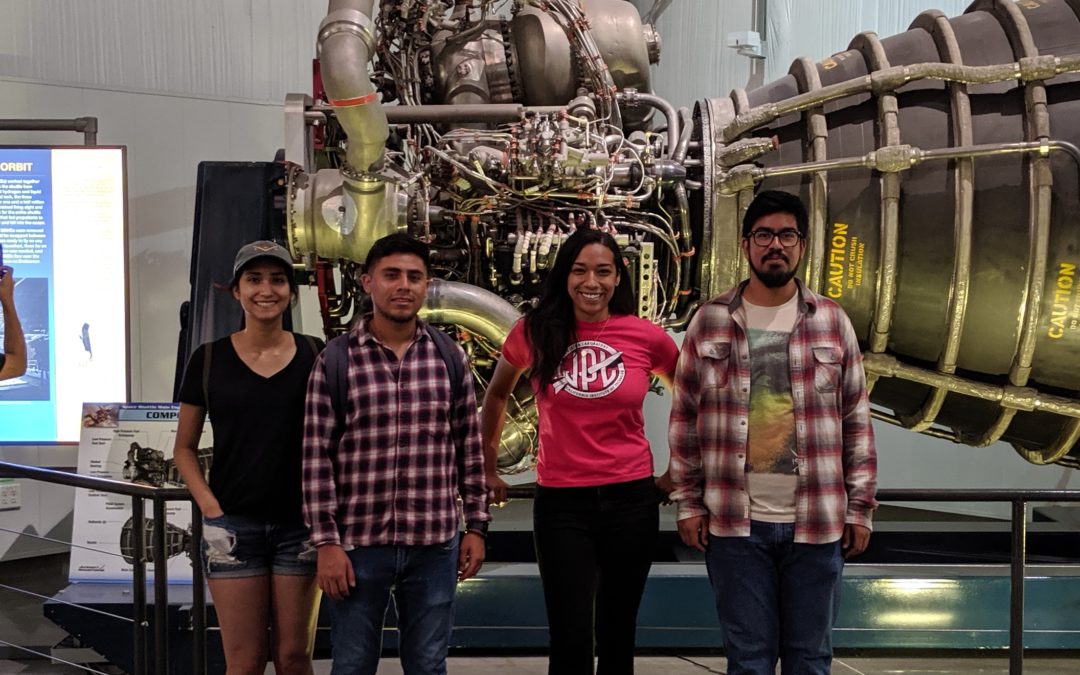When pursuing a degree in engineering, many students find that they not only gain the technical skills and knowledge related to their specific major, but they often end up learning a lot about themselves. For Base 11 intern Nallely Lopez, this is exactly what happened during her internship at the USC Liquid Propulsion Lab. We sat down with Nallely to learn more about her experience during the program and how she ultimately came to discover her own voice in the world of STEM:
What school do you currently attend and what is your major?
I am transferring from East Los Angeles College (ELAC) to the California State University, Long Beach (CSULB) for the Fall of 2019. At CSULB, I will be pursuing a Mechanical Engineering undergraduate degree and planning to join and lead an engineering project, as well as apply to more internships. After graduating, I hope to continue my education by pursuing a master’s degree.

Nallely and her fellow interns discuss their USC LPL final project
What inspired you to apply for the Base 11 USC program?
I learned about Base 11 through the Math Engineering Science Achievement (MESA) club at ELAC. I applied to the USC program because it offered an opportunity for me to get a hands-on experience working at a mechanical engineering lab, and more specifically, to get insight into the science and technology of liquid propulsion. I have always been amazed by how engineers can overcome significant obstacles to achieve space flight. The most advanced and sophisticated technological innovations are tested and implemented in the aerospace and aeronautical industry.
As an engineering student, the creativity that goes into designing and building a successful rocket is exciting, challenging, and truly awesome.
Can you give us a brief summary/overview of what your project was at USC?
My main project was to design and create mounts for three ball valves that are a part of the feed system (Hydra) that is used for testing rocket engines at the Liquid Propulsion Lab (LPL). The goal was to minimize the vibrations caused by the weight of the valves when transporting or firing Hydra. These vibrations both loosen the screws that connect these valves to other components of the feed system and cause malalignment of feed system lines. I had to research and choose either additive or subtractive manufacturing, decide what material worked best and met requirements, design custom mounts for each valve, and then deliver the products. I had to convince both the other interns and graduate students about the decisions I made in manufacturing and designing my project during our weekly meetings.
In what ways did the internship help you towards your goals?
After I completed my internship, I gained a more realistic as well as a clearer understanding of the concepts and research behind building a pressure-fed rocket engine. I also learned more technical skills which is important for a mechanical engineering student. I am most definitely going to apply these skills and knowledge at CSULB and in the industry.
What are your dreams for your future career?
I would love to become an expert problem solver. I want to apply my knowledge of engineering to solve challenging problems that require creativity and innovation.
That being said, I do not know what the future holds, but I am sure that I will be working as an engineer.
What advice do you have for students looking to pursue the field of aerospace/STEM?
My advice for students is to not be afraid to ask questions and to be brave enough to put yourself out there. As an introvert, I struggled to ask questions to my supervisors and other students. When I began to speak out, I not only gained a stronger understanding of complex concepts, but also developed a more genuine relationship with my peers and supervisors. However, it helps to look up questions on Google first to already have a clearer understanding of what you are unsure about and to make more precise questions when you ask someone.

Nallely and the other USC interns pose underneath space shuttle Endeavor
To learn more about Base 11’s programs, click here.

